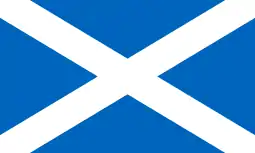Gifhorn
Gifhorn (German pronunciation: [ˈɡɪfhɔʁn] (![]() listen)) is a town and capital of the district of Gifhorn in the east of Lower Saxony, Germany. It has a population of about 42,000 and is mainly influenced by the small distance to the more industrial and commercially important cities nearby, Brunswick and Wolfsburg. Further, Gifhorn is part of the Hanover-Brunswick-Göttingen-Wolfsburg Metropolitan Region. The Municipality Gifhorn includes the villages of Gamsen, Gifhorn, Kästorf, Neubokel, Wilsche and Winkel.
listen)) is a town and capital of the district of Gifhorn in the east of Lower Saxony, Germany. It has a population of about 42,000 and is mainly influenced by the small distance to the more industrial and commercially important cities nearby, Brunswick and Wolfsburg. Further, Gifhorn is part of the Hanover-Brunswick-Göttingen-Wolfsburg Metropolitan Region. The Municipality Gifhorn includes the villages of Gamsen, Gifhorn, Kästorf, Neubokel, Wilsche and Winkel.
Gifhorn | |
|---|---|
 Old town hall | |
 Coat of arms | |
Location of Gifhorn within Gifhorn district  | |
 Gifhorn  Gifhorn | |
| Coordinates: 52°29′19″N 10°32′47″E | |
| Country | Germany |
| State | Lower Saxony |
| District | Gifhorn |
| Subdivisions | 6 districts |
| Government | |
| • Mayor | Matthias Nerlich (CDU) |
| Area | |
| • Total | 104.86 km2 (40.49 sq mi) |
| Highest elevation | 68 m (223 ft) |
| Lowest elevation | 50 m (160 ft) |
| Population (2019-12-31)[1] | |
| • Total | 42,837 |
| • Density | 410/km2 (1,100/sq mi) |
| Time zone | UTC+01:00 (CET) |
| • Summer (DST) | UTC+02:00 (CEST) |
| Postal codes | 38501–38510, 38516, 38518 |
| Dialling codes | 05371 |
| Vehicle registration | GF |
| Website | www.stadt-gifhorn.de |
The oldest verifiable source attests the existence of the city in the year 1196.
Gifhorn is home to the International Wind- and Watermill Museum, which contains a comprehensive collection and working replicas of the world's most common windmills.
Geography
Gifhorn lies at the confluence of the Rivers Ise and Aller. Gifhorn is situated about 20 km (12 mi) north of the city of Brunswick and about 15 km (9 mi) west of Wolfsburg. In the city, the Bundesstraße 4 and 188 meet. At the northern end of the city, the Lüneburg Heath starts.
History

Gifhorn was first mentioned in 1196. It was located at the crossing of two then important merchant routes: the salt street (German: Salzstraße) being a main trading route for salt between Lüneburg and Brunswick, and the grain street (German: Kornstraße) transporting grain between Celle and Magdeburg.
Education
Schools in Gifhorn include the Humboldt Gymnasium, the Otto-Hahn-Gymnasium, Fritz-Reuter-Realschule, Dietrich-Bonhoeffer-Realschule, Albert-Schweitzer-Hauptschule and the Berufsbildenden Schulen I and II. Alfred-Teves-Schule, which was called Volksschule Süd between 1954 and 1958, was open between 1954 and 2010.
Transport

The Gifhorn rail station is in the southern part of the town.
In the city, the Bundesstraße 4 and 188 meet.
The Bells Palace
Glocken-Palast, or The Bells Palace, is a monument and large building in Gifhorn. It was completed after 16 years of construction, combining various Russian timber building styles. Its cornerstone was laid by former Russian president Mikhail Gorbachev in 1996.[2]
It was built as a centre to promote cultural exchange across Europe, following the fall of the Iron Curtain.[3]
The Bells Palace will host events and exhibitions celebrating peace, freedom and cultural diversity.
Twin towns – sister cities
 Dumfries, Scotland
Dumfries, Scotland Gardelegen, Germany
Gardelegen, Germany Hallsberg, Sweden
Hallsberg, Sweden Korsun-Shevchenkivskyi, Ukraine
Korsun-Shevchenkivskyi, Ukraine Xanthi, Greece
Xanthi, Greece
Notable people
- Heinrich Decimator (around 1544-after 1615), clergyman, author of a universal dictionary (1st edition 1580: German, Latin and Greek, later Hebrew and French added)
- Thorsten Heins (born 1957), manager
- Anna Montanaro (born 1973), musical actress and actress
- Kay-Sölve Richter (born 1974), journalist and newsreader (ZDF)
- Katharina Marie Schubert (born 1977), theater and film actress
- Fabian Klos (born 1987), footballer
- Senta-Sofia Delliponti (born 1990), actress and singer
- Bjarne Thoelke (born 1992), footballer
References
- Landesamt für Statistik Niedersachsen, LSN-Online Regionaldatenbank, Tabelle 12411: Fortschreibung des Bevölkerungsstandes, Stand 31. Dezember 2019.
- "Bells palace". www.manager.co.th. Retrieved 18 July 2013.
- Leonid, Louneev. "Russian palace completed in Germany after 16 years". BBC News. Retrieved 18 July 2013.
- "Unsere Partnerstädte in Europa". stadt-gifhorn.de (in German). Gifhorn. Retrieved 2019-11-24.
External links
 Gifhorn travel guide from Wikivoyage
Gifhorn travel guide from Wikivoyage- Official website
 (in German)
(in German) - International museum of mills (in German)